Essential Lower Leg Workouts for Strength and Endurance
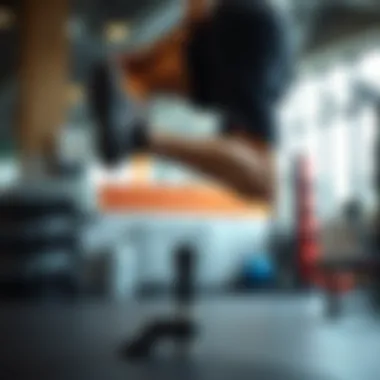
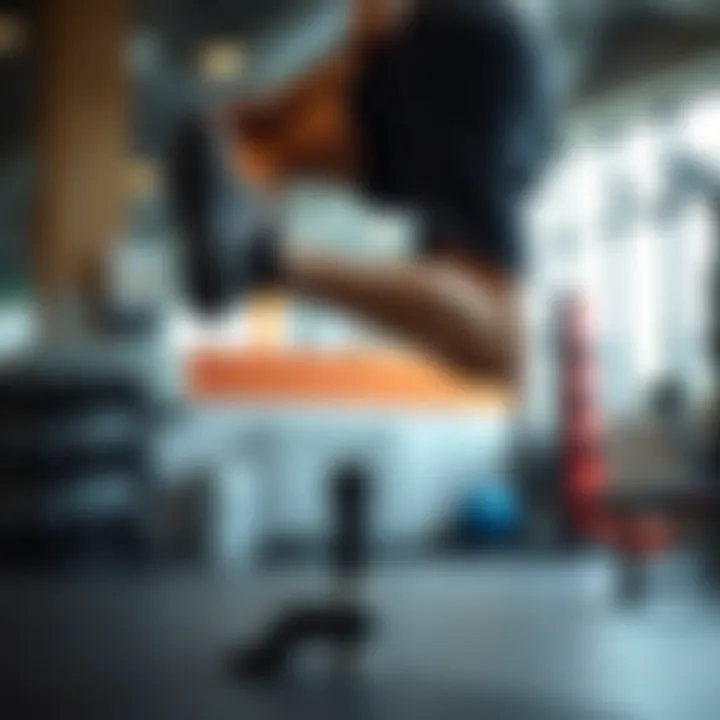
Intro
The lower leg is often the unsung hero of our body’s mechanics, playing a pivotal role in almost every movement we make. From standing up to sprinting across the finish line, the strength and functionality of the muscles in this area are essential. Yet, many fitness enthusiasts frequently overlook training the lower leg, focusing instead on larger muscle groups like the quads or glutes.
This guide will shed light on the important exercises, anatomical details, and pragmatic techniques to enhance your lower leg workouts. You will discover how proper training can improve athletic performance and day-to-day activities, along with insights into injury prevention and recovery that are key to longevity in your fitness journey.
Whether you are a seasoned athlete or a casual gym-goer, this comprehensive guide will equip you with the knowledge to incorporate effective lower leg workouts into your routine seamlessly.
Key Benefits
Physical Health Benefits
Strengthening the lower leg brings a whole slew of benefits to your overall health. A ton of the muscles below the knee, like the calf muscles, help stabilize your ankle joint. When these muscles are strong, they provide better support for every step you take, which could keep injuries at bay. Strong lower leg muscles also assist in controlling your balance during various activities, whether you're running, jumping, or simply walking up a flight of stairs.
Here are some key physical health benefits:
- Improved balance and coordination
- Enhanced endurance for athletic performance
- Reduced risk of injury in sports and daily activities
- Improved circulation in the legs
- Greater mobility and flexibility in lower extremities
Mental Well-being Enhancements
Engaging in lower leg workouts isn’t only about physical strength; it brings mental health benefits as well. Physical activity can lead to the release of endorphins, promoting feelings of happiness and relaxation. As you watch your strength improve, it builds confidence, and that mental boost can carry over into every aspect of your life.
Some psychological perks include:
- Increased self-esteem through improved performance
- Stress relief and improved mood
- Increased focus and mental clarity
- Sense of accomplishment from achieving fitness goals
Remember, a strong lower body can contribute significantly to overall fitness and health.
Practical Tips
Effective Meal Planning
Fueling your body with the right nutrients is crucial when engaging in lower leg workouts. Meal planning can ensure that you're giving your muscles the energy they need for growth and recovery. Here are some tips for meal planning:
- Integrate lean proteins like chicken or fish for muscle repair
- Include whole grains for sustained energy during workouts
- Load up on fresh fruits and vegetables for essential vitamins and minerals
- Don’t forget healthy fats from sources like avocados or nuts, supporting overall health
Quick and Efficient Workouts
Time efficiency is key for many fitness enthusiasts. Whether you have a packed schedule or simply want to maximize your workout time, quick yet effective lower leg routines can yield great results. Here are some ideas:
- Incorporate high-intensity interval training (HIIT) focused on the lower legs. For instance, alternating between calf raises and squat jumps can be effective.
- Combine exercises targeting different muscle groups into a circuit format. For example, pairing calf raises with lunges allows you to hit multiple areas without adding extra time to your routine.
- Always consider including stretching as part of your routine. Static and dynamic stretches promote flexibility and mobility while aiding recovery.
Understanding Lower Leg Anatomy
Understanding the anatomy of the lower leg is not merely an academic pursuit; it provides essential insights into how these muscles function and adapt under various physical demands. Knowledge of how your lower legs are structured helps optimize workouts, target weaknesses, and improve performance. As you delve into lower leg workouts, knowing the specific muscles involved and their roles significantly enhances your ability to train effectively.
The Key Muscles Involved
Gastrocnemius
The gastrocnemius is the prime mover when it comes to calf raises and other important movements. This large muscle, located at the back of your knee, is known for its dual-headed structure, giving it both strength and flexibility. It's particularly involved in activities like sprinting and jumping. What makes the gastrocnemius particularly advantageous in lower leg workouts is its ability to generate power swiftly, a crucial asset for athletic performance. However, a unique aspect of this muscle is that its size can overshadow the soleus during certain exercises, potentially leading to imbalances if not trained properly. Notice that the gastrocnemius is often more utilized in dynamic movements, as opposed to static postures.
Soleus
Unlike the gastrocnemius, the soleus lies deeper in the lower leg and is primarily activated during endurance activities, such as long-distance running. Its main role is to help with stability and sustained efforts. The soleus is key for activities that require prolonged muscle engagement, making it a beneficial consideration for routines aimed at improving endurance. A unique feature of this muscle is that it works even when the knee is bent, meaning it is always engaged during activities like walking. However, its depth can sometimes cause it to be overlooked in favor of the more prominent gastrocnemius.
Tibialis Anterior
Moving to the front of the lower leg, the tibialis anterior serves a vital role in dorsiflexion, which involves lifting the foot upwards. It helps maintain balance and posture during walking and running. What sets the tibialis anterior apart is the fact that it plays a critical role in preventing foot drop, a condition that can severely hinder mobility. While not as emphasized as the calf muscles, it is essential for proper function, especially in activities like climbing or navigating uneven terrains. Neglecting this muscle can lead to imbalances and issues like shin splints.
Role of Lower Leg Muscles in Movement
Stabilization
The stabilization aspect of lower leg muscles cannot be understated; these muscles work tirelessly to keep your ankle and foot coming together smoothly. This is crucial not only for athletic endeavors but also for everyday activities. A strong and functional lower leg reduces the risk of injuries and falls. Good stabilization means better performance across a variety of physical activities, from playing sports to engaging in routine chores. However, wrong training methods focusing solely on one area can lead to instability, so a well-rounded approach is advisable.
Mobility
When discussing mobility, it’s important to recognize that lower leg muscles allow for a range of motions necessary for various activities. From walking to jumping, the ability to move with ease and grace stems from having well-conditioned lower leg muscles. This mobility is vital for athletes as it influences their speed and agility. With mobility, you can perform better, but neglecting this aspect can lead to compensatory mechanics which ultimately may impair performance and invite injuries.
Strength
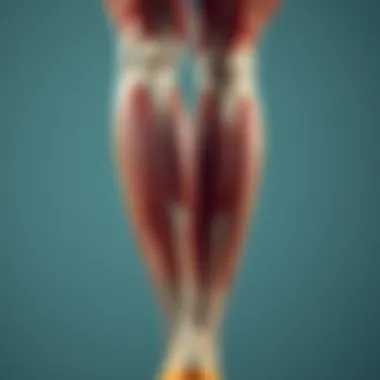
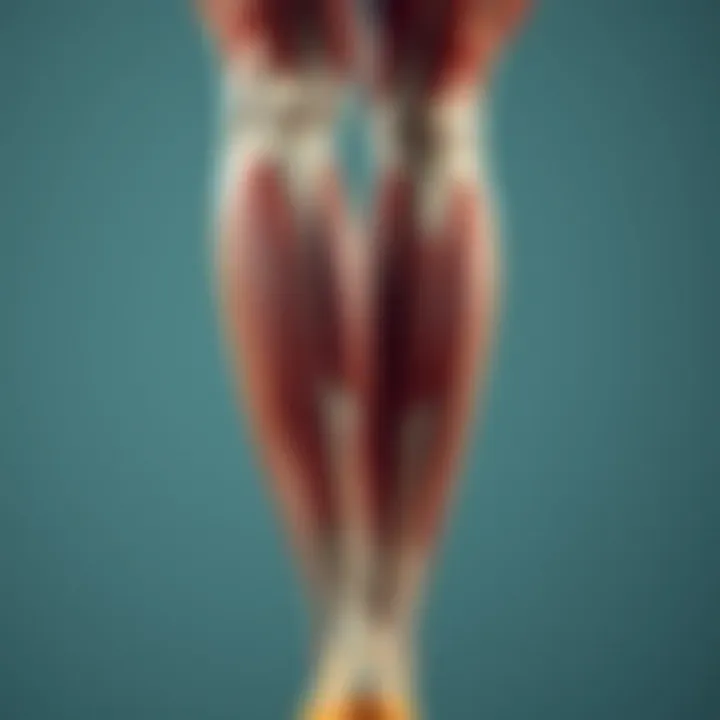
Strength in the lower legs directly correlates to your overall athletic performance and day-to-day functionalities. Strong muscles can exert force effectively, allowing for powerful strides and effective balance. Lower leg strength is not just about muscle size; it's about recruiting the right fibers for explosive power and endurance. However, focusing only on strength without adequate flexibility can lead to stiffness, which may inhibit your movements and pose injury risks over time.
Strong lower leg muscles serve as the foundation of effective movement and athletic performance. They are indispensable for stability, mobility, and strength in both athletic and everyday functions.
With these insights into lower leg anatomy, the path forward involves not just appreciation but also practical application. Understanding these key players sets the stage for maximizing workouts and ensuring a well-rounded approach to fitness.
Benefits of Targeting the Lower Legs
When it comes to fitness, the lower legs often don’t get their fair share of attention. Yet, targeting these muscles can lead to significant improvements in both athletic performance and everyday movements. By prioritizing lower leg workouts, individuals can enhance their strength, stability, and overall functionality, making it pivotal for both athletes and those who simply wish to be more active in their daily lives.
Improved Athletic Performance
Running
Running stands out as a fundamental aspect of athletic performance. It’s not just about speed; it’s about endurance and efficiency as well. Strengthening the lower legs through targeted workouts helps develop the muscles needed for powerful strides and sustained running, directly increasing your stamina and reducing fatigue. The real kicker is that well-conditioned lower legs lead to better shock absorption. This is crucial when you're hitting the pavement—or track—hard and often. Runners who neglect their lower legs may struggle with form, which can result in injuries over time. The advantages are clear: with improved muscle strength, runners can tackle longer distances and recover more swiftly.
Jumping
Jumping is another vital performance metric, particularly in sports like basketball, volleyball, and track and field. The powerful push-off and explosive upward movement depend heavily on the strength of your lower legs. A robust workout targeting these areas means more explosive power in your jump, allowing you to reach new heights—quite literally. Additionally, improved calf strength can enhance your vertical leap and overall agility, making you a more formidable athlete. However, there’s a caveat: neglecting form in jumping exercises can lead to stress injuries, so proper technique is key.
Agility
Agility is about moving quickly and easily, an essential component in nearly all athletic disciplines. Lower leg strength contributes directly to agility through improved muscle coordination and balance. With stronger lower legs, athletes can make sharper cuts, pivots, and direction changes faster than their peers. It’s a competitive edge that often makes all the difference in performance. However, focusing solely on speed without building a solid foundation may lead to instability and potential injuries, compromising those quick movements.
Enhanced Daily Functionality
Walking
Walking is perhaps the most basic yet critical form of movement, and strengthening the lower legs enhances this everyday activity. Strong calves and tibialis anterior muscles facilitate smoother and more efficient strides, especially over long distances. This efficiency can make a noticeable difference in your overall endurance, allowing you to walk further without discomfort. On the downside, if exercises lead to overuse without proper recovery, it could result in soreness or fatigue.
Climbing
When it comes to climbing stairs or navigating uneven terrain, lower leg strength is indispensable. Effective lower leg workouts ensure you have the necessary power and stability to ascend without straining other parts of your body. This greatly enhances mobility and opens up opportunities for more physically demanding outdoor activities. However, improper technique while climbing can also lead to misaligned posture, resulting in unnecessary strain on knees or hips.
Balance
Balance is an often underestimated component of physical health, but it plays a critical role in falls prevention and stability in movement. A strong lower leg contributes directly to maintaining balance, which can be particularly beneficial as we age. By engaging in workouts that build muscle in the lower legs, we lay the groundwork for better control and coordination in everyday activities. Yet, without careful conditioning, too much focus on strength can tip the scales of one’s center of gravity, resulting in an unexpected tumble.
Key Takeaway: Targeting the lower legs provides significant benefits not only in athletic pursuits but also in everyday functionality. A strong lower leg contributes to better performance in dynamic activities while also supporting essential daily movements. The balance between strength and technique in lower leg workouts is crucial to reap these benefits without inviting injuries.
Key Exercises for Lower Leg Development
The section on key exercises for lower leg development is pivotal for anyone serious about enhancing their leg strength and functionality. Focusing on the lower legs, which are often neglected in favor of larger muscle groups, is crucial to achieving a balanced and effective workout routine. The exercises detailed here not only improve strength but also contribute to better stability and mobility—two essential aspects for any athletic performance or daily activity. Thus, integrating these exercises into your regimen can have profound effects on your overall fitness journey.
Calf Raises
Standing Calf Raise
The Standing Calf Raise is a fundamental exercise that emphasizes the gastrocnemius muscle, the larger calf muscle. This move requires minimal equipment, making it accessible and a common choice among fitness enthusiasts. By simply standing on the balls of your feet, you are engaging not just the calf muscles but also improving balance and stability.
One of the key characteristics of the Standing Calf Raise is its versatility; it can easily be integrated into any leg workout. It offers the advantage of allowing for progressive overload, meaning you can gradually increase the weights or the repetitions to build strength over time.
However, one might consider its limitation—primarily, that it primarily targets the gastrocnemius and not as effectively the soleus, which is important for overall calf strength. Therefore, to achieve balanced calf development, it is recommended to incorporate other calf exercises as well.
Seated Calf Raise
On the flip side, the Seated Calf Raise effectively isolates the soleus muscle, which is often overlooked. When doing this exercise, performing it on a specialized machine helps to target this muscle more thoroughly. This exercise is especially beneficial for individuals who may have limitations with standing exercises, as it reduces the amount of weight placed on the ankles.
A notable feature of the Seated Calf Raise is that it allows you to focus more on the muscle contraction, thereby increasing the potential for muscle growth and endurance. The disadvantage, though, is that it may not engage stabilizing muscles to the same extent as the Standing Calf Raise.
Ankle Dorsiflexion
Resistance Bands
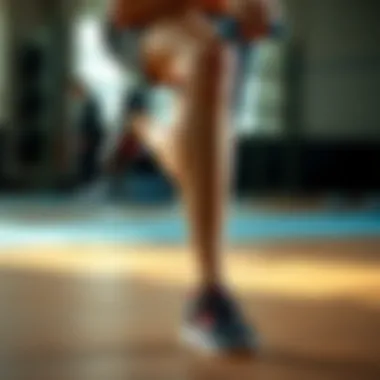
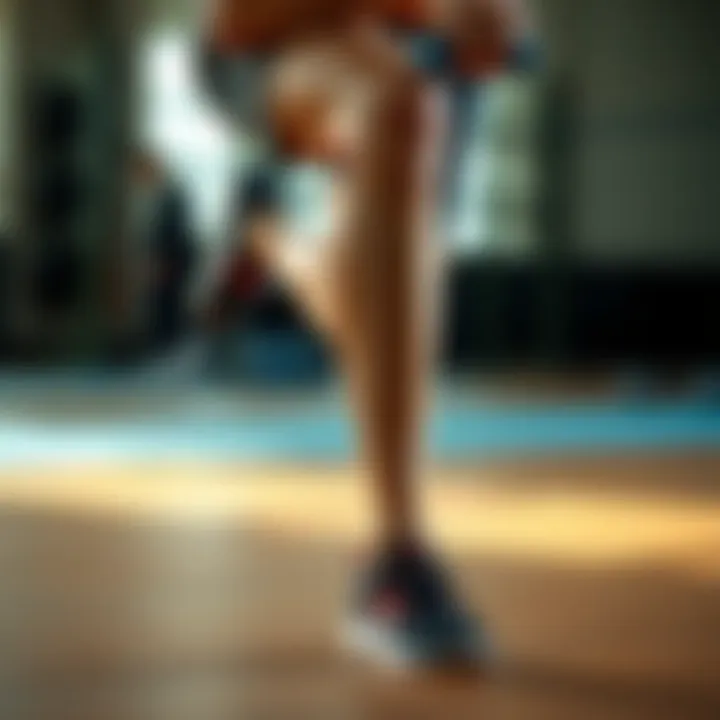
Resistance bands have become a staple in many workout routines, especially for targeting the lower legs. With the Ankle Dorsiflexion exercise using resistance bands, you can enhance not just strength but also the mobility of the ankle joint. When you pull against the band while keeping the leg elevated, you are effectively working the tibialis anterior, a key muscle for good ankle function.
This type of training offers the major benefit of being adjustable; you can modify the tension of the band according to your fitness level. Nevertheless, some people may find that it requires good coordination, which can be a hurdle for beginners.
Bodyweight Variations
Bodyweight variations of Ankle Dorsiflexion are another excellent way to promote ankle strength and balance. These require no equipment and can be performed almost anywhere. You simply flex your foot towards you while keeping your heel on the ground.
This method offers great benefits in improving functional strength, vital for activities like walking and running. However, the downside might be a limited resistance level compared to using bands or weights, which may not be challenging enough for everyone, especially advanced lifters.
Seated Toe Raises
Seated Toe Raises provide a complementary approach to calf training. Sitting down while lifting your toes helps stretch the calf muscles and targets the tibialis anterior. This exercise is straightforward, making it accessible for people at various fitness levels.
However, many people overlook it as it doesn’t provide the same mental “pump” associated with standing exercises. Yet, it serves as a great finisher in a workout routine. It targets often neglected muscles, and though it may not be the flashiest, it's very effective for developing calf and ankle strength.
Lunges
Forward Lunges
Forward Lunges are another fundamental compound movement that targets multiple muscle groups in the legs, including the quads, hamstrings, and calves. What sets forward lunges apart is the dynamic nature of the movement, which helps improve both strength and balance. They engage the core and require stability, making them a popular choice for lower leg workouts.
The key advantage of forward lunges is their versatility—you can perform them with or without weights, catering to beginners and seasoned lifters alike. However, they do require focus on form; otherwise, one might risk knee discomfort or injury. Keeping an upright posture is essential for preventing strain.
Reverse Lunges
Reverse Lunges have a similar profile but shift the mechanics somewhat, putting less strain on the knee joint. This is particularly beneficial for individuals who may have knee issues. The backward movement engages the entire posterior chain, promoting improved balance and stability.
A unique feature of reverse lunges is that they can feel more natural for many individuals, especially those who are used to movement patterns in workout routines. Like forward lunges, they can also be performed with weights, increasing their effectiveness. The only downside might be that some people find them less intuitive at the beginning compared to forward variants, requiring additional practice.
Box Jumps
Box Jumps round out this section of key exercises, adding an element of explosive power development. This plyometric exercise involves jumping onto a raised platform and requires a significant amount of muscle engagement in the calves, quads, and glutes. Box Jumps are fantastic for developing lower body strength and enhancing agility, which can translate into improved performance in many sports and activities.
Though highly beneficial, Box Jumps need to be executed with proper technique to avoid injury. They are not recommended for beginners without supervision because of the risk associated with jumping mechanics. However, once someone masters the technique, including Box Jumps can unlock a whole new avenue of physical potential.
With these exercises, anyone can build a well-rounded lower leg strength program, crucial not only for athletic pursuits but also for daily functional movements.
Incorporating Lower Leg Workouts into Your Routine
Integrating lower leg workouts into your regular exercise schedule is not just a good idea; it’s essential for building a balanced and functional body. The lower legs play a pivotal role in movement, stability, and strength. Whether you're stepping up your fitness game or simply looking to enhance daily tasks, consistent focus on the lower leg region can bring a world of benefit. This section dives into how to effectively weave these workouts into your everyday routine, emphasizing both frequency and balance with other muscle groups.
Frequency and Volume
Beginner Recommendations
For those new to fitness or specifically targeting lower leg workouts, starting off on the right foot—pun intended—can significantly impact your journey. A frequency of two to three sessions per week is usually spot on for beginners. This allows adequate recovery, which is crucial for both muscle growth and preventing injury. The key characteristic of beginner recommendations is they often focus on form and less on intensity.
It's about establishing a solid foundation.
- Consistency Over Quantity: Aim for shorter, focused sessions rather than long, exhaustive ones.
- Form, Form, Form: Prioritize implementing the right technique early on, which pays dividends later.
One unique advantage of taking a beginner’s approach is that it gives your body time to adjust to the new strains without overwhelming it. However, a risk might be complacency if the routine is too easy, which can stall progress. Always be mindful to gradually increase intensity or volume as you become more comfortable with the movements.
Advanced Strategies
For seasoned pros or those who’ve built up their foundations, advancing your lower leg workouts entails increasing not just frequency but complexity. Four to five times a week can be beneficial, incorporating a mix of intensity and recovery days. The advanced strategies usually feature higher resistance training, plyometrics from box jumps, and multi-directional movements which challenge stability.
Some distinguishing characteristics of advanced routines include:
- Progressive Overload: Continually raising the challenge incrementally keeps muscle adaptation.
- Combine and Conquer: Pairing lower leg workouts with compound exercises for other muscle groups, such as squats or deadlifts, can maximize efficacy and functionality.
However, tread carefully; these strategies can lead to overtraining if not managed well. Always listen to your body. If nagging soreness becomes pain, take a step back and reassess. Striking a balance between pushing limits and allowing recovery is crucial.
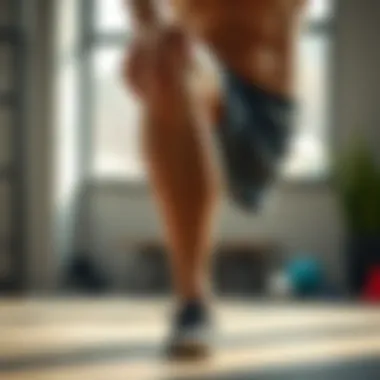
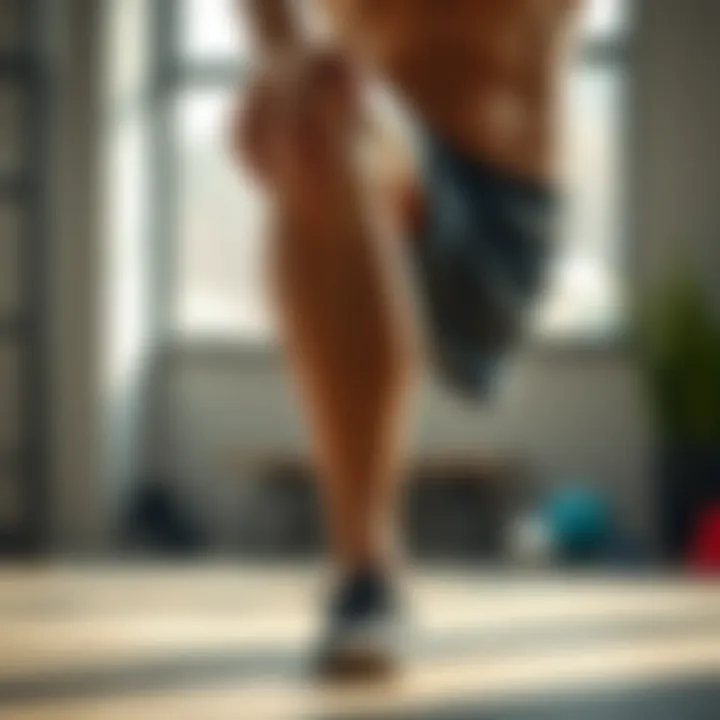
Balancing with Other Muscle Groups
An essential element to consider when incorporating lower leg workouts is how they interact with other muscle groups. Not every workout needs to focus solely on the lower legs. Instead, creating a comprehensive routine that includes upper body and core exercises can enhance overall performance.
- Full-Body Synergy: Incorporate leg days with upper body or core workouts to ensure muscle groups work in harmony.
- Functional Movements: Movements, like lunges or squats, involve multiple muscle groups, improving your overall balance and strength.
In summary, incorporating lower leg workouts into your routine invites a myriad of benefits. The frequency and volume tailored for beginners versus advanced athletes showcase distinct approaches, but both are undeniably vital for an effective fitness regime. When combined with a well-rounded workout plan, these lowers leg exercises can elevate athletic performance and daily living to new heights.
Common Mistakes to Avoid
In the pursuit of building strength in the lower legs, many workout enthusiasts often overlook common pitfalls. Recognizing and addressing these mistakes is crucial, as they can lead to injuries or hinder progress. Let’s dive into a couple of key errors that can derail even the most dedicated fitness journey.
Ignoring Form and Technique
One of the biggest blunders in lower leg workouts is ignoring the fundamental principles of form and technique. Lifting weights or performing exercises without the proper stance or mechanics can result in unnecessary strain on the muscles and joints. For instance, when performing calf raises, failing to fully extend your ankles at the top of the movement may limit your gains. It's not just about going through the motions; it’s about doing it right.
Using subpar form can lead to imbalances, which in turn can increase the risk for waves of pain or discomfort. Pay attention to alignment, keep engagement in focus, and ensure muscles are firing correctly. A good cue is to imagine rooting your feet to the ground with every lift. This will also improve muscle activation and efficiency, leading to better outcomes over time.
"Quality over quantity" is a mantra that applies perfectly here; less can be more if executed with precision.
Overtraining the Muscles
Another common issue that many face is the tendency to overtrain the lower leg muscles. It’s tempting to push yourself to the limit, especially when trying to achieve fast results. However, overtaxing these muscles leads not only to fatigue but can also predispose you to overuse injuries. Lower leg muscles, like the gastrocnemius and soleus, require balancing stress and recovery for optimal growth and performance.
Disease, pain, and performance plateaus can spring up when you're not allowing time for recovery. A good practice is to integrate rest days into the routine and cross-train other muscle groups. Listen to your body; if tissues feel tender or swollen, it might be time to back off a bit.
To mitigate overtraining, consider implementing a structured schedule. Here's a simple outline:
- Frequency: Limit intensive lower leg workouts to 2-3 times a week.
- Variation: Rotate exercises weekly to prevent repetitive strain.
- Rest: Designate at least one full day for muscle recovery each week.
Combining these elements can fortify not only recovery but also prepare your muscles for subsequent strength-building sessions.
Injury Prevention and Recovery Strategies
Understanding the nuances of injuries is vital for anyone engaging in lower leg workouts. These muscles, while resilient, can be prone to strain and overuse, especially during intensive training regimens. The significance of injury prevention cannot be overstated—it's not just about avoiding setbacks but also about ensuring longevity in one's fitness journey. Incorporating protective measures and recovery techniques will enhance your workout efficiency and elevate your overall performance while minimizing discomfort and downtime.
Warm-up and Stretching Techniques
Before diving headfirst into your workout, warming up is like laying the groundwork for a fruitful session. Picture it as prepping your vehicle before a long drive. A proper warm-up gradually increases your heart rate and blood circulation, ensuring that your muscles are primed for action. For the lower legs, it’s essential to focus on stretching both the gastrocnemius and soleus muscles.
Some effective warm-up techniques include:
- Dynamic Stretching: Movements like ankle circles or toe walking can help activate the muscles and increase range of motion.
- Light Jogging or Skipping: This can warm up the muscles effectively without the shock of starting directly into heavy exercises.
Once you're warmed up, static stretching can be incorporated later to improve flexibility. Holding stretches for around 20-30 seconds can significantly enhance muscle elasticity.
Recognizing Signs of Overuse Injuries
Being in tune with your body is paramount for preventing injuries. Overuse injuries typically creep up quietly, often leaving you with aches that signal something’s amiss. Symptoms may include persistent pain during or post-exercise, swelling, or a feeling of weakness in the ankle or calf areas.
Key indicators that should not be ignored:
- Persistent Discomfort: If pain lingers beyond a typical soreness, especially in the lower legs, it’s a red flag.
- Decreased Performance: Noticeable drops in strength or agility could signal fatigue or strain.
- Swelling or Inflammation: These physical manifestations should compel you to pause and reassess.
Keeping a training log can help identify patterns in discomfort and enable timely engagement with preventive strategies before any full-blown injury occurs.
By recognizing these signs early and implementing recovery strategies such as rest, ice, compression, and elevation (RICE), the chances of developing chronic issues can be drastically reduced. Adopting a cautious approach towards your lower leg regimen ensures you stay on the path of improvement without the worry of setbacks.
Closure
In this article, we made clear that lower leg workouts are not merely an appendage to a full-body exercise routine; instead, they are pivotal for both athletic success and everyday physical performance. Strengthening the lower leg muscles impacts various movements, from running to jumping and even simply enhancing balance while walking. By engaging these muscles, individuals can build a stable base that supports complex movements and overall mobility.
Summary of Key Takeaways
- Muscle Development: Understanding the gastrocnemius, soleus, and tibialis anterior is crucial. Targeting these muscles decreases the risk of injury while improving functionality.
- Exercise Variety: Incorporating a range of activities such as calf raises and lunges can help stimulate the muscles in different ways, ensuring comprehensive development.
- Injury Prevention: Employing warm-up techniques and being aware of overuse injuries is vital for sustainable training.
- Integration: Lower leg workouts should be harmonized with strength training of other body parts for overall fitness, rather than treated as isolated efforts.
- Performance Enhancement: Athletes can experience significant improvements in sports performance when their lower leg muscles are well-conditioned.
These insights provide a window into the importance of targeting the lower legs effectively, not just in the realm of fitness but also as a means to improve daily activities. For anyone looking to enhance their physical capabilities, attention to their lower leg routines could yield remarkable results.
"Strengthening your lower legs can pave the way to greater overall mobility and athletic performance."
In summation, the journey towards powerful lower legs is one worth undertaking, as it fortifies not only athletic pursuits but also the simplicity of daily life.















